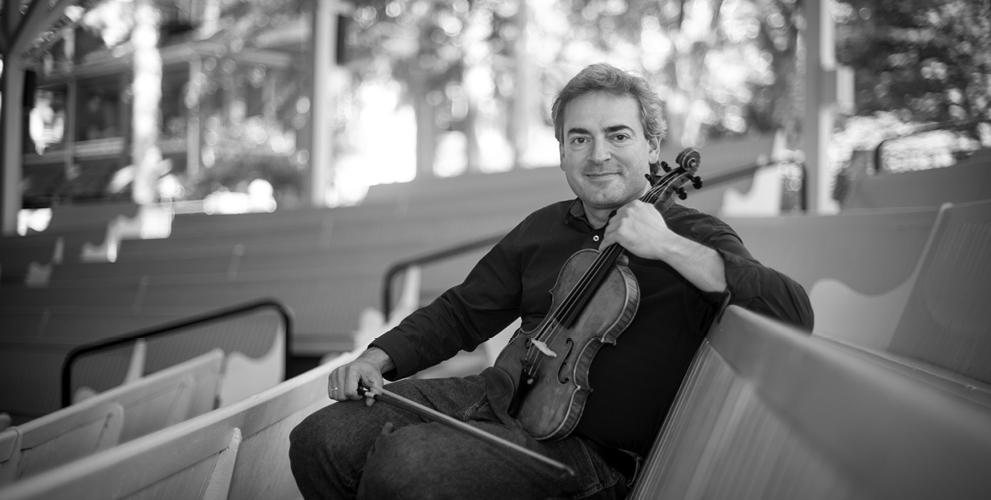Romania is the land of Transylvanian forests, Carpathian mountain meadows, and the delta of the Danube, haven for cormorants and pelicans on the northwest shore of the Black Sea. When expatriate Romanian violinist Marian Tanau revisited his homeland in 2003, he felt a need “to give something back to the place I came from.”
Tanau, who immigrated to the United States when he was twenty-two and has been active with the Detroit Symphony since 1995, established an American Romanian Festival to foster collaboration and cross-cultural communion between performers and audiences from both countries. The festival is now in its twelfth year and will bring chamber music to Kerrytown Concert House November 5.
This year’s program, “Opposites,” pairs an obscure Piano Quintet by George Enescu with a twentieth-century masterpiece of electronically enhanced minimalism by American Steve Reich.
Enescu’s Quintet was only recently published after languishing for decades in Bucharest’s Enescu Museum. The Brahms-like opus was written in 1896 when the sixteen-year-old prodigy was studying composition with Jules Massenet at the Paris Conservatory.
Reich’s magnum opus, “Different Trains,” appeared in 1988. It grew out of his 1960s experiments with tape loop phasing, and reflects his lifelong fascination with “the constant flickering of attention between what words mean and how they sound” and his well-known penchant for rhythmic repetition.
Commissioned and premiered by the Kronos Quartet, the work combines live and prerecorded string quartet parts with snippets from taped interviews with Reich’s childhood governess, a retired Pullman porter, and three Holocaust survivors. Hearing spoken phrases transformed into melodic tropes for stringed instruments can be disarming. The effect intensifies as cycling shards of memory dance in the eddying instrumental stream. Woven into the mix are sounds of steam engines, train whistles, and air raid sirens.The background for this work is partly autobiographical. When he was one year old, Reich’s parents agreed to a legal separation. During the years 1939-1942, in an unusual shared custody arrangement, their young son journeyed on streamlined passenger trains between New York and Los Angeles. In retrospect, said Reich, he came to the realization that “if I had been in Europe during this period, as a Jew I would have had to ride very different trains.”Reich’s sobering reflection on the use of cattle cars to transport human beings during the Holocaust had a Romanian counterpart: hundreds of thousands of Romanian Jews were murdered during WWII by Ion Antonescu’s fascist government, which was zealously complicit in Hitler’s genocidal campaign. For Tanau to present “Different Trains” in the American Romanian Festival is a profound humanitarian statement.


